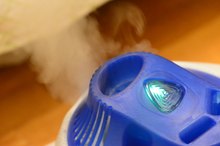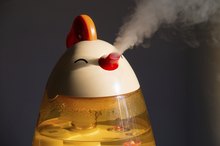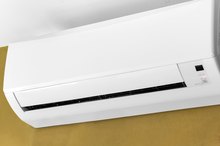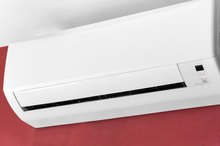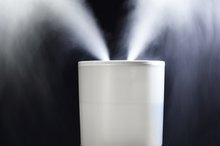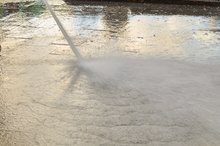The Healthiest Types of Humidifiers
Home humidifiers add moisture to the air and help counteract the effects of dry winter heat. According to the U.S. Environmental Protection Agency, or EPA, humidifiers can ease dry sinuses, itchy eyes or skin and even protect your furniture and finishes from damage 2. Unfortunately, some humidifiers also serve as a breeding ground for mildew, bacteria and allergens. Choose your new home humidifier with care to protect your family's health and maintain indoor air quality.
If you are experiencing serious medical symptoms, seek emergency treatment immediately.
Evaporator
Evaporator-style humidifiers contain an integral fan that blows air through a moistened filter or cloth. While ultrasonic and impeller units simply use vibration or spinning mechanisms to launch moisture into the air, evaporator units first pass the water through a filter to remove bacteria, mold and minerals. The EPA warns buyers to stay away from non-filtered units, including ultrasonic or impeller humidifiers, and stick with safer units, including filtered-evaporators.
To keep your humidifier operating as safely as possible, the EPA recommends emptying all water from the unit and cleaning it after each use. Change the filter as directed by the manufacturer, and follow all recommended maintenance instructions for best results.
- Evaporator-style humidifiers contain an integral fan that blows air through a moistened filter or cloth.
- While ultrasonic and impeller units simply use vibration or spinning mechanisms to launch moisture into the air, evaporator units first pass the water through a filter to remove bacteria, mold and minerals.
Vaporizers
Cool Vs. Warm Mist Humidifiers
Learn More
According to MayoClinic.com, steam humidifiers use electricity to boil the water within the unit and produce steam 1. This action effectively distills the moisture released by the humidifier, which means fewer minerals or contaminants are added to the air in your home. These units, sometimes called "warm mist" humidifiers, don't require filters due to the effects of distillation.
While vaporizers offer a health alternative to impeller or ultrasonic units, they do pose some risks. According to MayoClinic.com, parents should never use steam humidifiers around children 1. If these units are knocked over, the boiling water inside could spill and cause burns.
- According to MayoClinic.com, steam humidifiers use electricity to boil the water within the unit and produce steam 1.
Integral Humidistat
Humidistats represent one of the most important features buyers should look for in a healthy humidifier. A quality humidistat measures humidity levels in your home and displays them on a digital screen or dial. MayoClinic.com recommends keeping humidity levels between 30 and 50 percent 1. If levels are too low, and you could experience dry skin or itchy eyes. Humidity higher than 50 percent encourages mold and bacteria growth, and also contributes to condensation and unwanted moisture in the home. The safest and healthiest humidifiers contain a humidistat that automatically switches the unit on and off to keep humidity levels within a safe and healthy range.
- Humidistats represent one of the most important features buyers should look for in a healthy humidifier.
- The safest and healthiest humidifiers contain a humidistat that automatically switches the unit on and off to keep humidity levels within a safe and healthy range.
Related Articles
References
- MayoClinic.com: Humidifiers
- U.S. Environmental Protection Agency: Indoor Air Pollution
- Medline Plus. Humidifiers and health. Updated October 11, 2018.
- Unsdorfer S. Cool mist humidifier: adding humidity where it counts. Central Heating & Air Conditioning.
- "Indoor Air Facts No. 8: Use and Care of Home Humidifiers." Indoor Air Quality. 24AUG2006. US Environmental Protection Agency (EPA).
- Pearl, MD, Alden J.. "Medical Encyclopedia - Sinusitis." Medline Plus. 11JAN2007. National Institutes of Health.
Writer Bio
Emily Beach works in the commercial construction industry in Maryland. She received her LEED accreditation from the U.S. Green Building Council in 2008 and is in the process of working towards an Architectural Hardware Consultant certification from the Door and Hardware Institute. She received a bachelor's degree in economics and management from Goucher College in Towson, Maryland.
